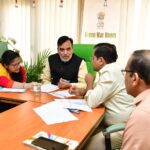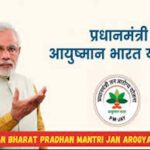The number of patients visiting three Central Government Hospitals viz. Safdarjung Hospital, Dr. RML Hospital and LHMC and associated Hospitals for treatment is much larger as compared to their handling capacity in terms of number of beds, manpower and other resources. Despite availability of huge infrastructure and other services in these Hospitals, there is a waiting period for certain procedures due to the ever increasing pressure on infrastructure and available manpower in these hospitals, which varies from Department to Department in these Hospitals.
As per information provided by Medical Council of India, there are a total 9,88,922 allopathic doctors registered with the State Medical Council/Medical Council of India as on 30th June, 2016. Assuming 80% availability, it is estimated that around 7.91 lakh doctors may be actually available for active service. It gives a doctor-population ration of 1:1668 as per current population estimate of 1.32 billion.
The Government has taken various steps to increase the number of doctors, which include:
(i) The ratio of teachers to students has been revised from 1:1 to 1:2 for all MD/MS disciplines and 1:1 to 1:3 in subjects of Anaesthesiology, Forensic Medicine, Radiotherapy, Medical Oncology, Surgical Oncology and Psychiatry in all Medical Colleges across the country. Further, teacher: student ratio in public funded Government Medical Colleges for Professor has been increased from 1:2 to 1:3 in all clinical subjects and for Associate Prof. from 1:1 to 1:2 if the Associate Prof. is a unit head. This would result in increase in number of specialists in the country.
(ii) DNB qualification has been recognized for appointment as faculty to take care of shortage of faculty.
(iii) Enhancement of maximum intake capacity at MBBS level from 150 to 250.
(iv) Enhancement of age for superannuation to 65 years for all sub-cadres of Central Health Services.
(v) Relaxation in the norms of setting up of Medical College in terms of requirement for land, faculty, staff, bed/bed strength and other infrastructure.
\
(vi) Strengthening/upgradation of State Government Medical Colleges for starting new PG courses/increase of PG seats.
(vii) Establishment of New Medical Colleges by upgrading district/referral hospitals preferably in underserved districts of the country.
(viii) Strengthening/ upgradation of existing State Government/Central Government Medical Colleges to increase MBBS seats.
Public Health is a state subject. The National Rural Health Mission (NRHM) was launched in 2005 to provide accessible, affordable and quality health care particularly to the rural population. The NHM supports strengthening of public health systems as the main vehicle for social protection. To make health care affordable to the population, the Government under NHM has been supporting the States for provision of free drugs, diagnostics and free emergency and essential services in public health facilities.
The Minister of State (Health and Family Welfare), ShFaggan Singh Kulaste stated this in a written reply in the Lok Sabha here today.








F*ckin¦ awesome issues here. I¦m very happy to look your post. Thank you so much and i am looking ahead to touch you. Will you kindly drop me a e-mail?
http://www.corburterilio.com/
I love reading and I believe this website got some genuinely useful stuff on it! .
http://www.borvestinkral.com/
Greetings! I know this is kind of off topic but I was wondering if you knew where I could locate a captcha plugin for my comment form? I’m using the same blog platform as yours and I’m having problems finding one? Thanks a lot!
http://www.borvestinkral.com/